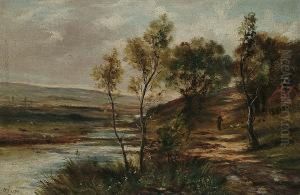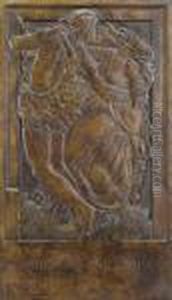Rayner Hoff Paintings
Rayner Hoff was an influential British-born Australian sculptor, best known for his monumental works that embody a sense of nationalism and a reflection of the human condition in the early 20th century. Born on November 27, 1894, in the Isle of Man, Hoff moved to Australia in 1923, where he would leave a lasting legacy on the country's artistic landscape. His education in art began in England, where he attended the Nottingham School of Art and subsequently the Royal College of Art in London. Hoff's early career in England was marked by his involvement in the war effort during World War I, an experience that would later influence much of his work.
Upon his arrival in Australia, Rayner Hoff quickly became a prominent figure in the Australian art scene. He was appointed as the head of the sculpture department at the East Sydney Technical College (now the National Art School), a position through which he had a profound impact on the development of Australian sculpture. Hoff was instrumental in fostering a new generation of Australian sculptors, imbuing in them a sense of modernism and innovation.
Hoff's most renowned work is arguably the sculptures he created for the Anzac Memorial in Hyde Park, Sydney. These works, including the central figure of 'Sacrifice' and the reliefs on the exterior of the memorial, are considered masterpieces of Australian sculpture. 'Sacrifice', which depicts a group of men supporting a dead comrade, is a poignant representation of the ultimate cost of war and a powerful expression of communal grief and remembrance. This piece, along with the other sculptures for the memorial, showcases Hoff's ability to convey complex emotions through form and his adeptness at working on a monumental scale.
Throughout his career, Hoff's style evolved, reflecting both classical influences and contemporary movements. His work demonstrates a mastery of form and a deep understanding of the human body, qualities that made his sculptures both timeless and deeply expressive of the era's spirit. Hoff's contributions to Australian art were not limited to his sculptures; he also played a significant role in the design of the original Holden lion badge, an iconic symbol in Australian automotive history.
Rayner Hoff's career was tragically cut short when he passed away unexpectedly from septicaemia on November 19, 1937, at the age of 42. Despite his relatively brief career, Hoff's influence on Australian sculpture and art education continues to be felt. His work remains a significant part of Australia's cultural heritage, celebrated for its artistic merit and its deep resonance with Australian identity and history.

